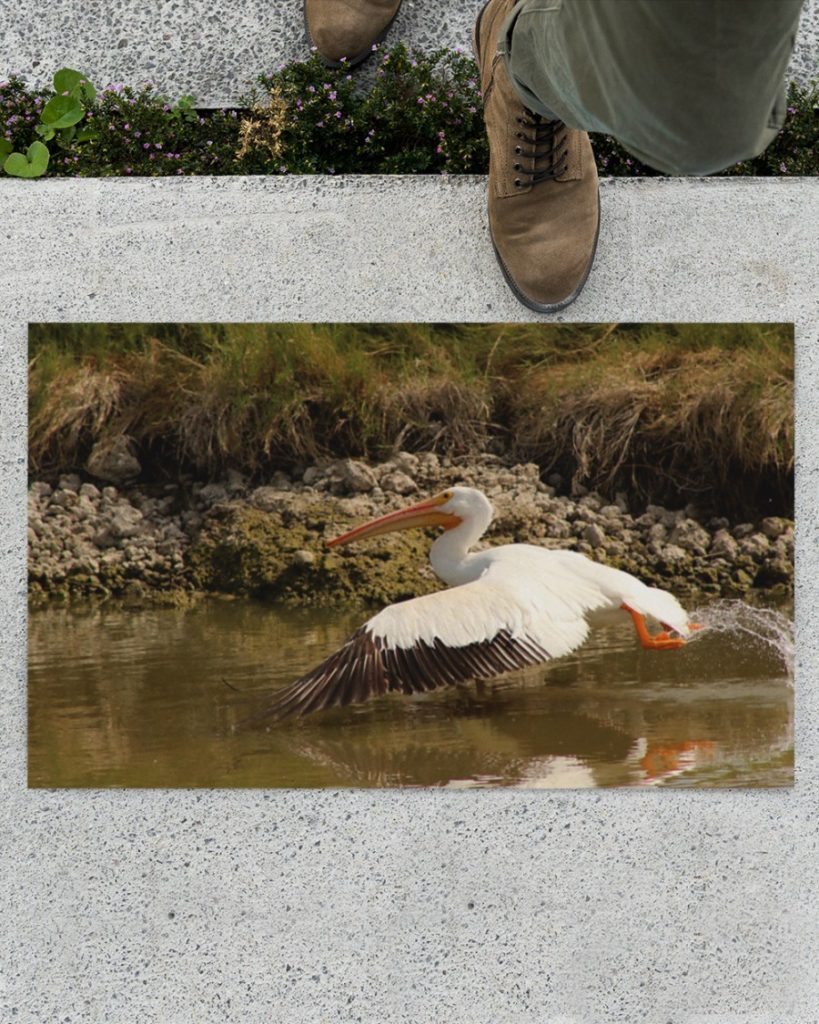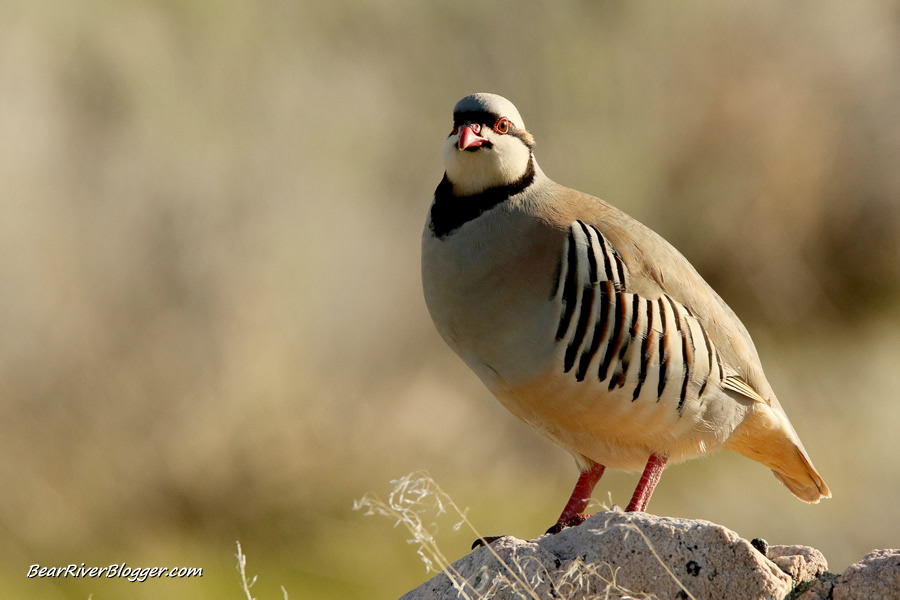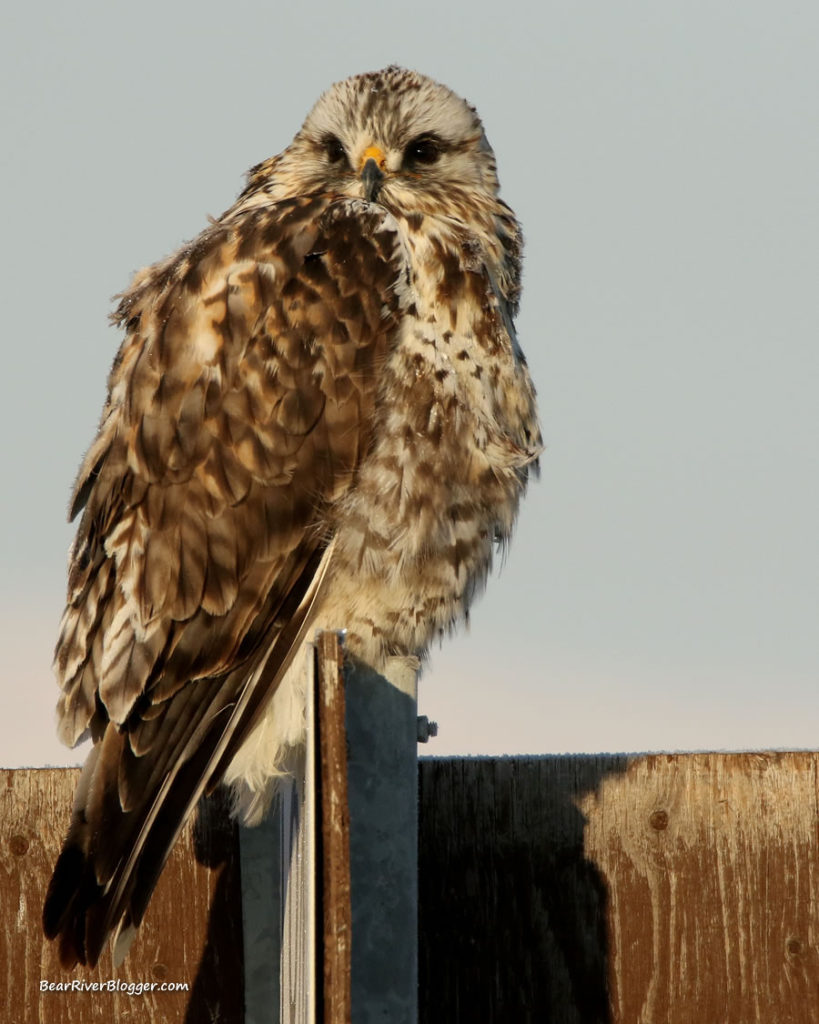Let’s face it, when it comes to birding, the chukar partridge isn’t at the top of very many bird watchers’ shortlist of must-have birds to check off for the year.
It just doesn’t command the attention from us bird watchers like the bald eagle or barn owl does.
Well, I am here to tell you the chukar partridge is an interesting bird, to say the least, and one that can be found not too far from civilization as well.
Chukar partridge are commonly found on Antelope Island State Park but not always seen because of their reclusive nature and the rough terrain it prefers to live in.
Over the years, I have seen and photographed numerous chukars on Antelope Island, mainly around the visitors center’s northern portion of the island.
Chukar partridge are not native to Antelope Island or North America but originated from Southeast Asia and portions of the Middle East and were brought over to the United States as a game bird solely for hunting purposes.
Since its introduction, the chukar has literally thrived in some of the arid regions of the western United States, including portions of Utah where it has been transplanted in many locations around the state as a game bird.
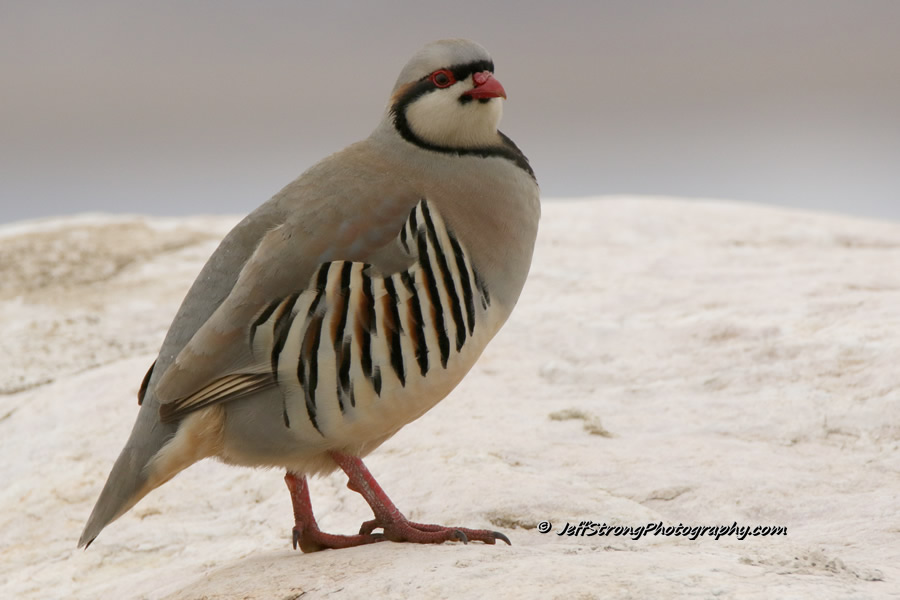
But in 1989, 160 chukars, including a few with radio transmitters, were introduced onto Antelope Island, not as a game bird but as part of a cooperative research study between BYU, Utah DWR, and Utah State Parks, in an effort to try and determine the survival of captive-reared chukars as to wild chukar transplants.
According to the research study, an additional 150 more chukars were released on Antelope Island the following year.
Some of the released chukars were pen-raised and others were captured from the Dugway and Thomas ranges in Utah’s western desert, places where chukars have been transplanted in the past by the Utah DWR as a game bird.
The research study mentioned chukars were present on Antelope Island well before the study but were most likely wiped out during the severe winter of 1983-84 when no chukars were observed.
It’s not known just how this original population of chukars found their way onto the island, but since most of Antelope Island was private until it was sold to the State of Utah in 1981, it is theorized they were placed on the island by the private landowners for hunting purposes.
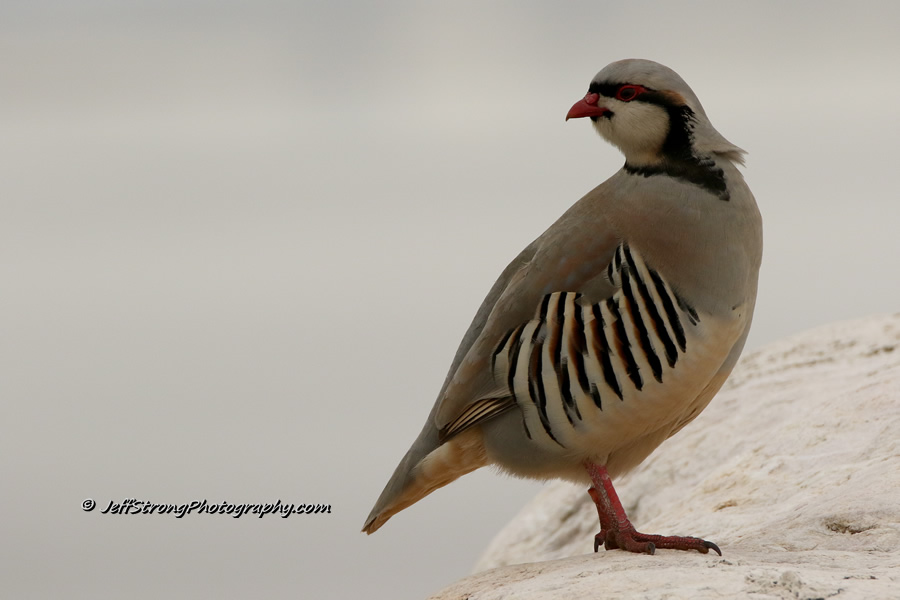
Even to this day, the chukar can be found in several areas on Antelope Island, although from my own personal observation, their numbers might be down a bit as sightings have been a bit scarce the last couple of years.
To find the chukars on Antelope Island, drive slowly around the northern end of the island and look for rocky hillsides, especially around the northern side of the visitors center.
Chukars prefer hills and they also like to call to the flock while standing atop of a rock when possible.
This call is how chukars locate one another so the best way to locate chukars is to arrive in the morning when they call the most, stop, and listen for the “chuck chuck chuck” calls as they try and locate each other.
It is a very distinctive call, and once you have heard it before it’s a tell-tail sign chukar are in the area.
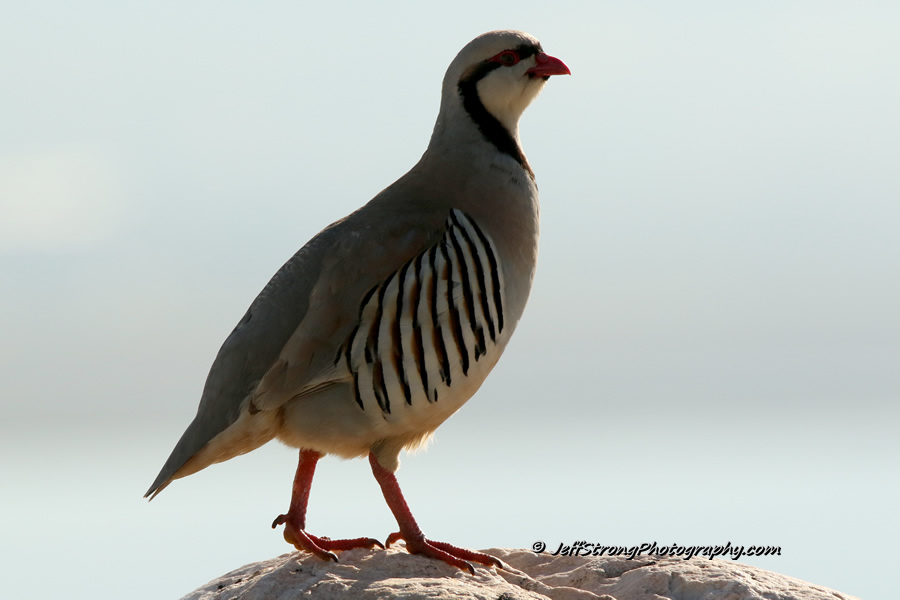
Today, while at the Antelope Island Visitors Center, I was told of a bird feeder on the northeast side of the building that attracts chukars to clean up the spilled birdseed.
With regards to their diet, chukars eat seeds, berries, leaves, insects, and green grass shoots, especially from cheatgrass.
So if you are looking to check off the chukar partridge from your birding life list, Antelope Island State Park is one option not too far from home.
Currently, as of this writing, the day use fee for Antelope Island is $15, but there are so many other interesting things to see on the island, including bison, birds, historic buildings, and grand sunsets, it’s well worth the price of admission in my opinion.
If you’re a fan of nature, especially bird watching, head on over to my subscribe page and sign up for email notifications for future blog posts.
We also have a small YouTube channel as well where we do a few video updates from time to time when we visit the Bear River Migratory Bird Refuge.
American White Pelican Doormat. Visit our online store for more information and to make a purchase.
